The 10 Best Cars for Senior Drivers
Whether you're 50, 60 or 70, you may start thinking about a vehicle that conforms to your chassis, instead of the other way around.


Older drivers shopping for new cars have one trend going for them and one that’s a problem. In their favor: The increasing popularity of small SUVs means far more vehicles have a seat that’s at just the right height to get in and out, without being too big overall. Against older drivers: In the quest for greater passenger safety, vehicles’ roof pillars have grown very thick, compromising your ability to see out.
We’ve picked our best cars for seniors by considering their accessibility, visibility, active safety features, headlight performance and controls—in particular, whether the vehicle has a traditional Park-Reverse-Neutral-Drive-Low (PRNDL) shift lever rather than a dial, pushbuttons or some kind of inscrutable toggle switch. We didn’t forget factors that matter to everyone, though: price, performance and reliability.
Check out our 10 picks.
If a vehicle earned a Top Safety Pick (TSP) or Top Safety Pick Plus (TSP+) designation from the Insurance Institute for Highway Safety, it’s noted. Because those ratings include the results of tests of vehicles’ active safety features and headlight performance, the trim level or options needed to get that rating are listed, when applicable. MSRPs include delivery and shipping costs.

Give Those Electronic Nannies a Chance
But first, a note about those active safety features. This a fast-moving area of vehicle development, and today’s cars are likely to boast a variety of systems that will to blink, beep and buzz at you if you fail to signal when you make a lane change or if you get too close to something. The car may even pull at the steering wheel if you start to drift out of your lane.
Broadly speaking, seniors say they want these features, at least according to polls. Anecdotally speaking, there are plenty of gripes about lane-departure warnings. Research by the Insurance Institute for Highway Safety bears this out, finding that significant portions of drivers of all ages shut these off.
Yet these features hold a lot of promise for improving safety. Before you shut them off in frustration (or pass on buying systems that are optional), try the free Smart DriverTEK course that AARP offers online to familiarize yourself.
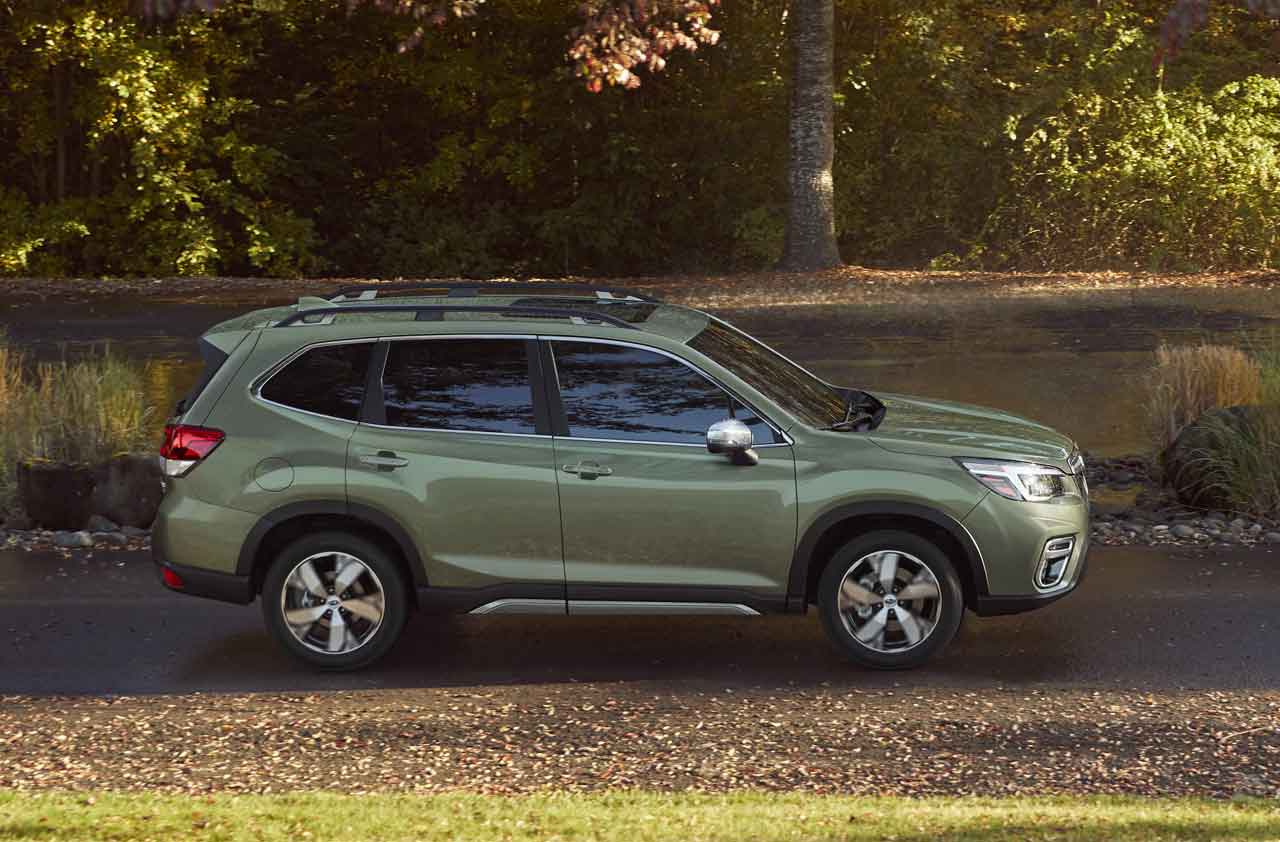
2020 Subaru Forester
- IIHS safety rating:: TSP+
- Trim levels: Limited, Touring
- Consumer Reports predicted reliability rating: 3 of 5
- MSRP: $32,105 (Limited)
One of the earliest “crossovers” to bridge the gap between car and sport-utility, the Subaru Forester has been a favorite of senior drivers since its introduction in 1997. Now in its fifth generation, the Forester’s roof pillars have grown as Subaru engineers strive to meet ever-more-demanding safety standards. Subaru succeeded: The Forester is one of only three small SUVs to meet the stringent Top Safety Pick Plus standard from the Insurance Institute for Highway Safety.
The other two are the Mazda CX-3 and Mazda CX-5, whose swoopier styling compromises visibility. So the nod here goes to the Subie, which still has relatively big windows—and an exceptionally large front door opening. Get yours in Touring or Limited trim in order to have the best lighting performance from the adaptive headlights, which shine around curves.
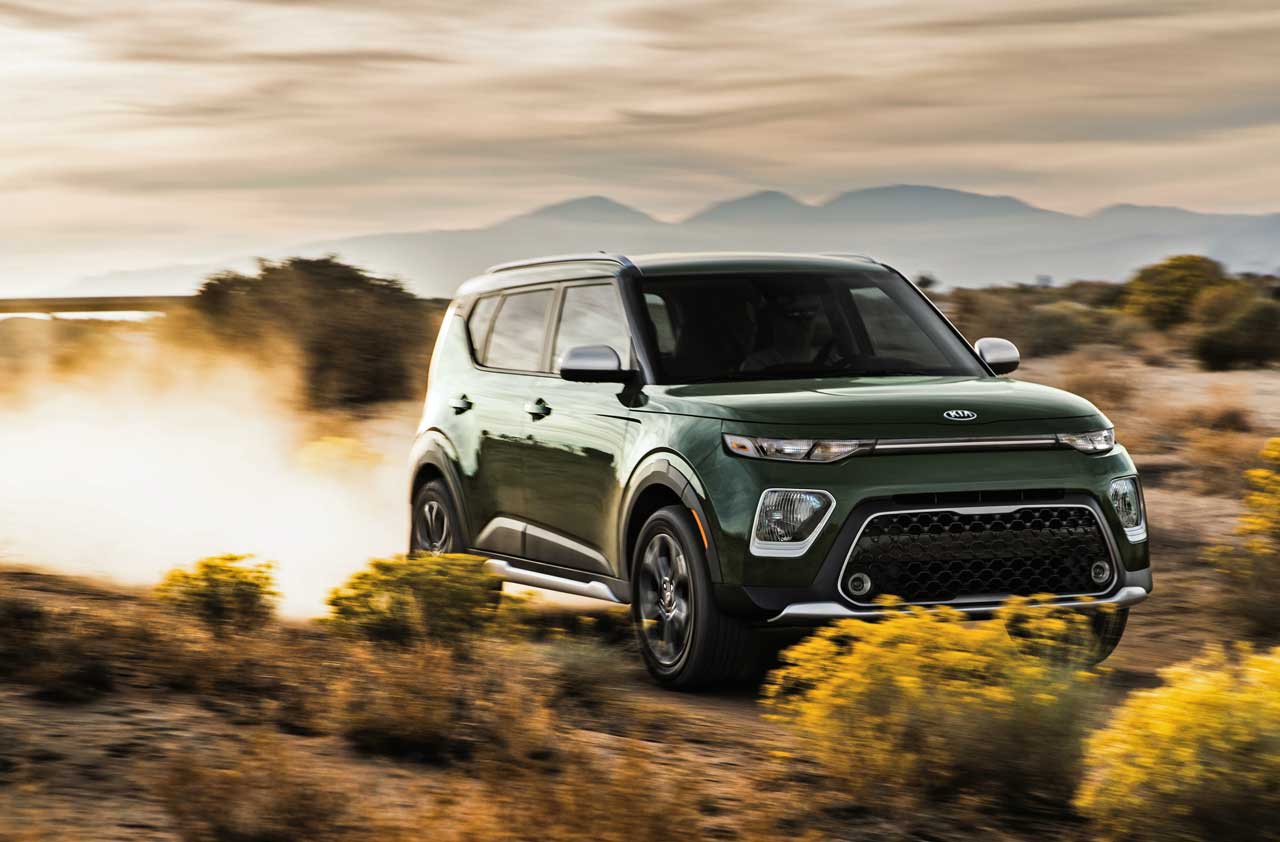
2020 Kia Soul
- IIHS safety rating:: TSP
- Trim levels: EX trim with Designer Collection package, GT-Line Turbo
- Consumer Reports predicted reliability rating: 3 of 5
- MSRP: $25,655 (EX trim with Designer Collection)
The Kia Soul wasn’t the first “box on wheels” from Asian carmakers (you might remember the Nissan Cube and the Scion xB), but it’s the one that’s still on the market. The blocky styling translates to a vehicle that’s easy to get in and easy to see out of, if not necessarily easy on the eyes (as the story goes, the Soul’s designer was aiming to evoke a “boar with a backpack”).
The Soul’s windshield is a big bay window positioned high and far forward of the driver—you won’t have to scooch forward to see a stoplight overhead. One downside of that boxy shape: poor aerodynamics. The Soul’s fuel economy isn’t awful, but it lags many small SUVs. On a recent drive into the Allegheny mountains (and into a stiff headwind), the continuouslyvariable transmission kept the 2.0-liter engine buzzing hard to keep pace. In short: Great city car; not much of a highway cruiser. Consider the Turbo if you want more get-up-and-go, though it won’t help with the gas mileage.

2020 Honda CR-V
- IIHS safety rating:: TSP
- Trim levels: Touring
- Consumer Reports predicted reliability rating: 3 of 5
- MSRP: $34,370 (Touring, FWD)
There are more small SUVs out there than you can shake a stick at, and virtually all of them offer the higher seating position that makes getting in and out easier than a sedan. So why the Honda? A good safety rating, plainspoken controls (including a PRNDL shifter) and Honda’s “full suite” approach in offering its Honda Sensing safety features across all trims. Also, frankly, we’re willing to extend Honda a bit of goodwill on reliability beyond its only so-so rating from Consumer Reports.
Like many vehicles on our list, the CR-V has been around for a while (and has been a favorite of seniors from the get-go). Returning shoppers will find the rear visibility far worse than on the earliest generations of the CR-V. To atone for the narrow rear window and fat pillars, Honda has equipped the CR-V with generous side mirrors; it’s up to you to use them.
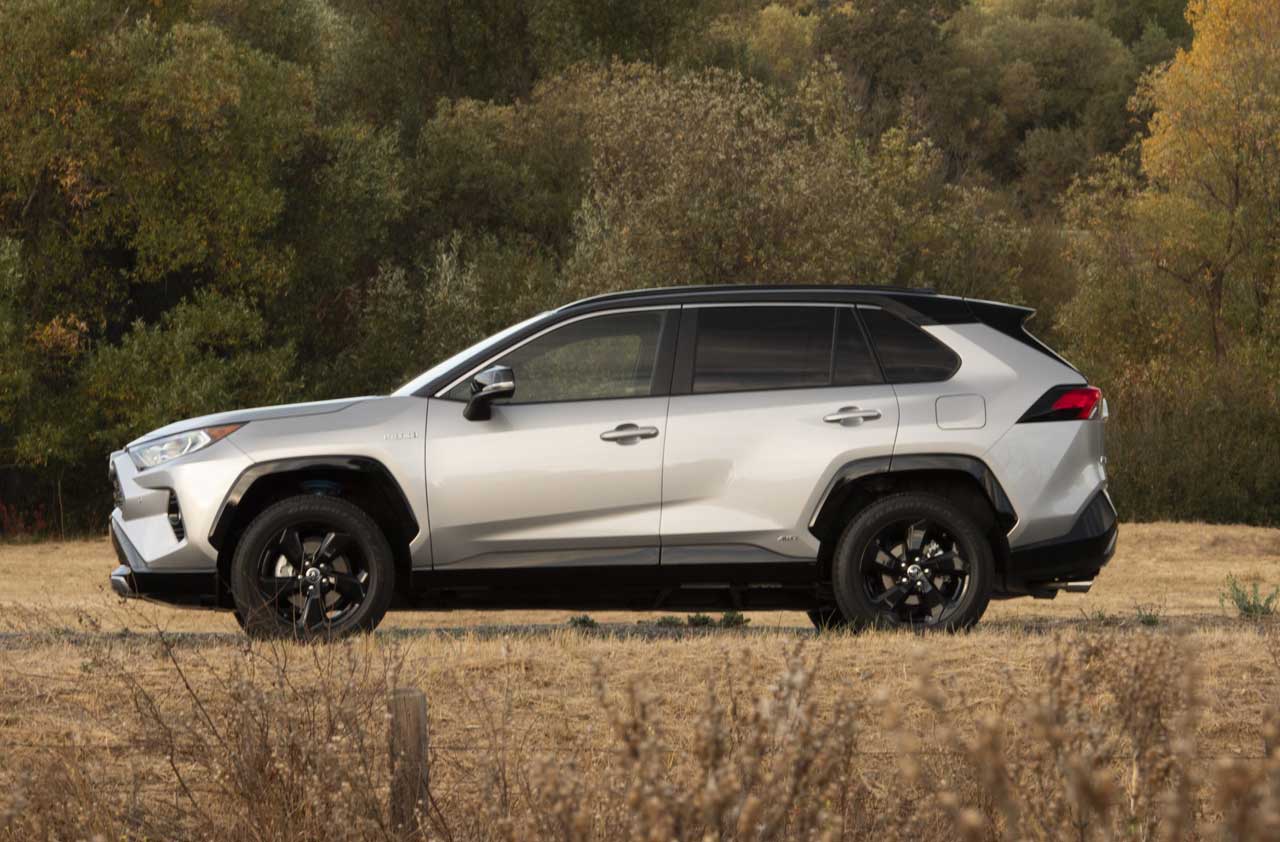
2020 Toyota RAV-4
- IIHS safety rating:: TSP
- Trim levels: Hybrid
- Consumer Reports predicted reliability rating: 4 of 5
- MSRP: $40,455 (Hybrid with adaptive headlights)
As we’ve said, there are oodles of small SUVs that would be a good fit (literally) for a senior driver, thanks to that higher driving position. So we have to use some other criteria to thin the herd. In this case, the RAV-4 made the list because the Toyota Corolla did not. Yes, the Corolla is a car of legendary reliability and value and has long been popular with older drivers. But it sits way down low, and the latest sedan versions have poor rearward visibility due to big, fat rear headrests that can’t be lowered. The Toyota Camry is a similar story.
For Toyota brand loyalists (and others) who want a more accessible vehicle, we recommend the RAV-4. Now in its fifth generation (and looking very, um, Jeep-y), the RAV-4 scores well on safety testing and offers a conventional shifter and a high-mounted control screen surrounded by buttons that give you direct access to main menus (less need for scrolling or swiping or other distracting and inconvenient behaviors).
Before you have a heart attack over that MSRP, note that it’s a function of what’s needed to get the Top Safety Pick from the IIHS. Their criteria requires a headlights rated as “acceptable” or “good”. The only version of the RAV4 to reach that is the fanciest trim of the hybrid, with the additional option of adaptive headlights. All other RAV4s, including ones that start under $30k, have the same crash safety. But their headlights are only rated “marginal”.
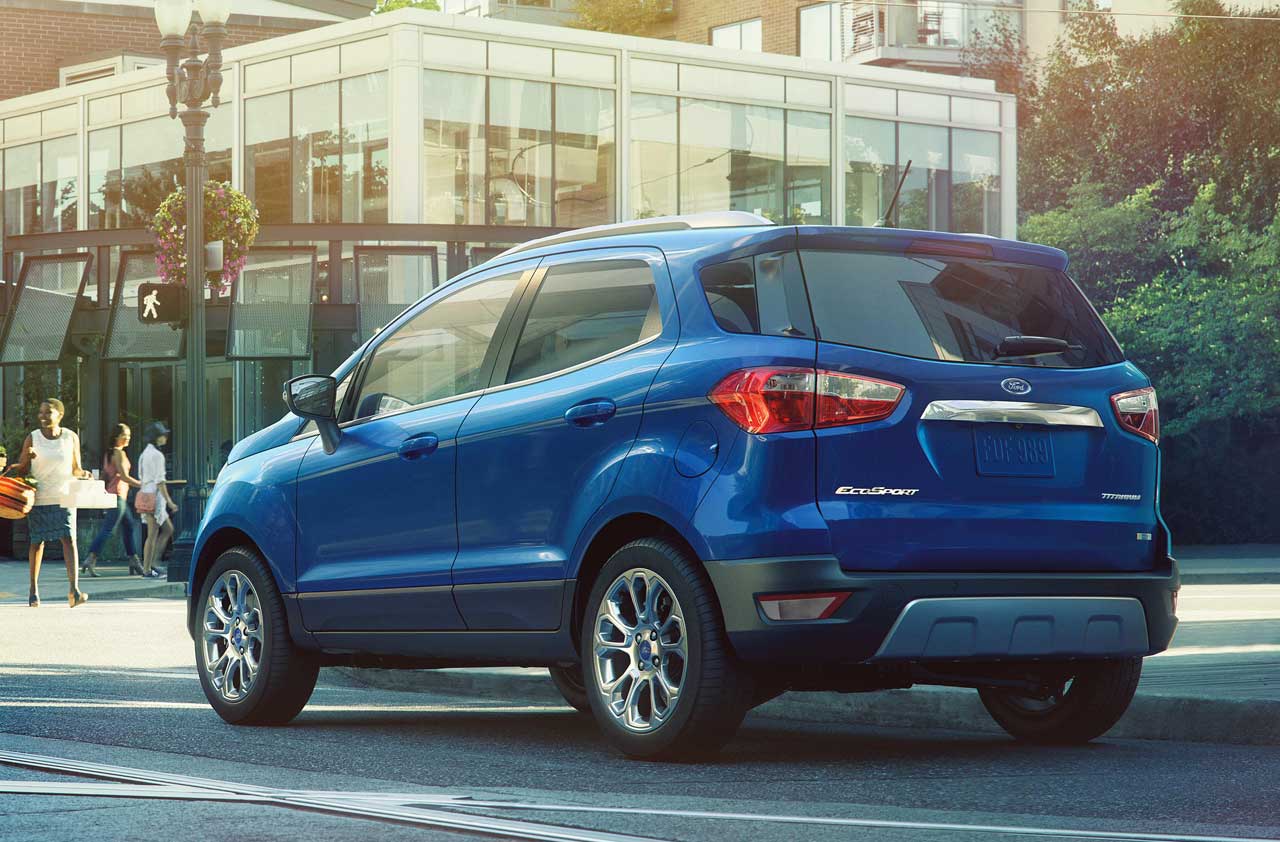
2020 Ford EcoSport
- IIHS safety rating:: None
- Trim levels: All
- Consumer Reports predicted reliability rating: 5 of 5
- MSRP: Starting at $20,485
When the car show came to town earlier this year, we spent literally hours wandering the floor with a tape measure checking seat cushion height, door sill height and depth, and door-opening height. By those metrics, the EcoSport is a standout—just look at it, riding way up high on little wheels. Once you’re inside, you’ll find a conventional PRNDL shifter (unlike most other Ford products) and an airy cabin with good visibility—forward, that is. The rear seat is diminutive, and the windows in the rear pillars are useless (from a driver’s seat point of view). But if you’re shopping for the smallest vehicle that’s still big in the right places, the EcoSport is worth a look. We haven’t driven one, but Consumer Reports has, and it found the EcoSport’s handling much more stable and confidence-inspiring than its baby-giraffe looks would suggest.
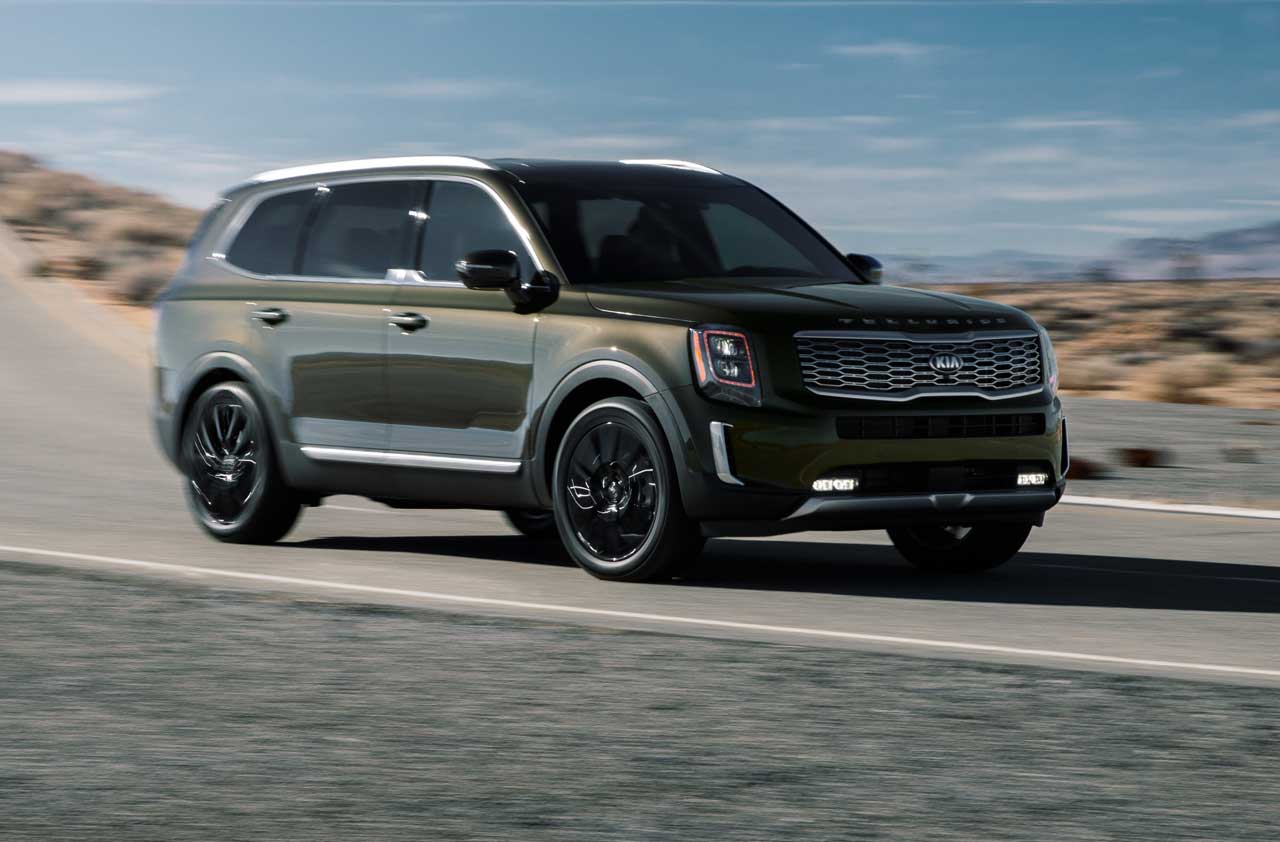
2020 Kia Telluride
- IIHS safety rating:: TSP
- Trim levels: SX
- Consumer Reports predicted reliability rating: Not available
- MSRP: $41,790 (SX, FWD)
If a small SUV is good for ingress and egress, wouldn’t a big one be better? Not necessarily. There comes a point of diminishing returns, where the doors don’t get any bigger, but the vehicle overall does. If you have reason to buy a big SUV, go for it. But otherwise, that’s just more sheet metal to grind off against the carport posts. And if you shop too big (a Chevy Tahoe, say), you’re looking at a vehicle you have to haul yourself up into. The Kia Telluride is at the top end of what we’d recommend. Again, size-wise, it has plenty of peers, but unlike competition from General Motors and Ford in the big, three-row crossover category, it has a standard PRNDL shifter instead of a dial or a bunch of knobs where the ashtray used to be.
If you hear Kia and your reaction is rental car? we urge you to reconsider. The brand has been making big strides in fit and finish, and it has a very generous warranty to further ease any hesitation. Hyundai offers a peer to the Telluride, the somewhat more luxurious Hyundai Palisade. But it has a push button shifter.
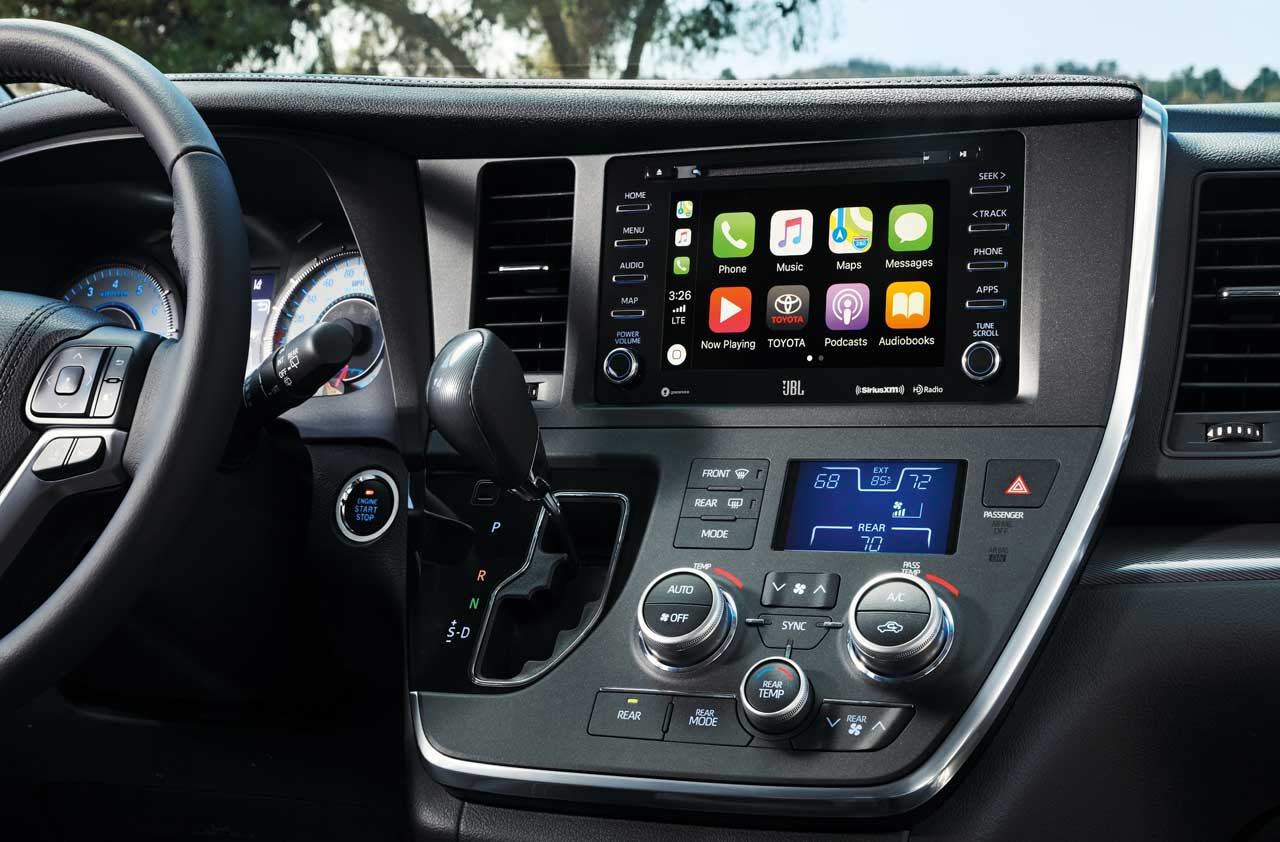
2020 Toyota Sienna
- IIHS safety rating:: None
- Trim levels: All
- Consumer Reports predicted reliability rating: 4 of 5
- MSRP: Starting at $32,760
Got young grandchildren? Expecting any? Want to be the hero grandparent? Then how about a minivan? No, seriously: Minivans offer very comfortable ingress and egress for the driver and front passenger, with a higher (but not too high) ride height. The sliding side doors can be convenient for loading items (when you’re not carrying around your descendants). The main downside is size. If your last minivan was from decades ago, when your kids were small, you might be astonished at how much they’ve grown. So, which one? The recently redesigned Honda Odyssey and Chrysler Pacifica put up the best safety ratings. However, they have oddball shifters—the Pacifica in particular, with a round knob to select gears. The Toyota Sienna offers a straightforward PRNDL shifter, a well-tested layout and a reputation for endurance.
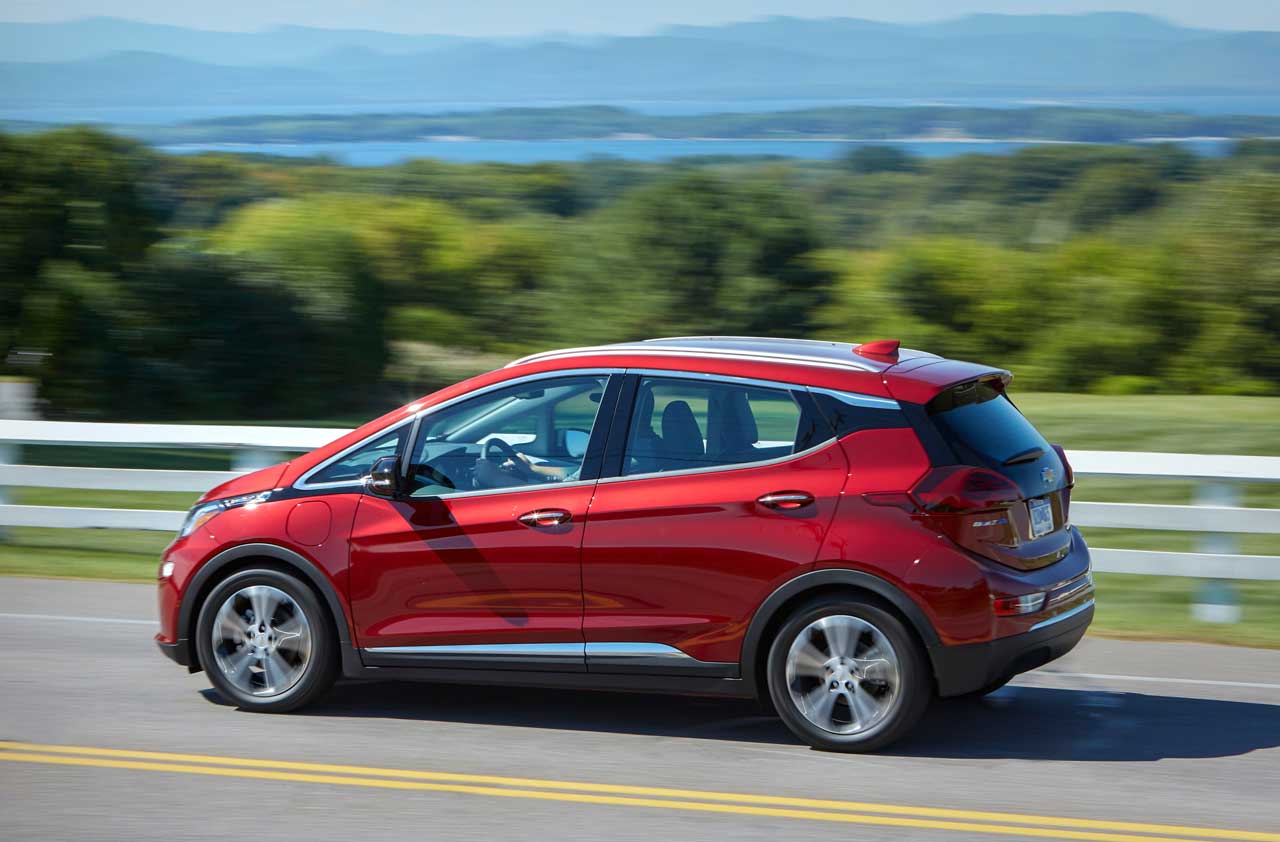
2020 Chevrolet Bolt
- IIHS safety rating:: TSP
- Trim levels: Premier trim equippedwith Driver Confidence II package
- Consumer Reports predicted reliability rating: 3 of 5
- MSRP: $43,380 (Premier, DriverConfidence II)
Yes, it’s electric, with all that entails. The Bolt has no internal-combustion engine whatsoever—you have to plug it in somewhere. But if you’ve cut back on road trips or even highway driving, that might matter a whole lot less. (The Bolt has an EPA-estimated 259 miles of range on a full charge.) If you’re a snowbird who keeps a car down south, storing the Bolt for the summer’s a step easier: no worrying about the gas going bad.
However, we’re recommending the Bolt not just because it’s an EV. It also has a tall seating position, big doors and, notably, a completely flat floor. There’s no sill to lift your feet over when getting in or out. Vision to the rear is only so-so, but you can fold down the backseat’s headrests to improve the view. Like other electrics, the Bolt has a somewhat unconventional shifter and lots of information flying by on the screen to tell you about what the battery is up to, among other things. But it still has knobs and buttons for the climate system and radio. To get the highest safety rating from the IIHS, you’ll need to buy a fairly high level trim and get the optional “Driver Confidence II” package, which includes active safety features and the best headlights. You might still be able to get a tax credit (as well as a fat discount) when you buy it, so don’t let that $40k MSRP freak you out. Nobody pays that.
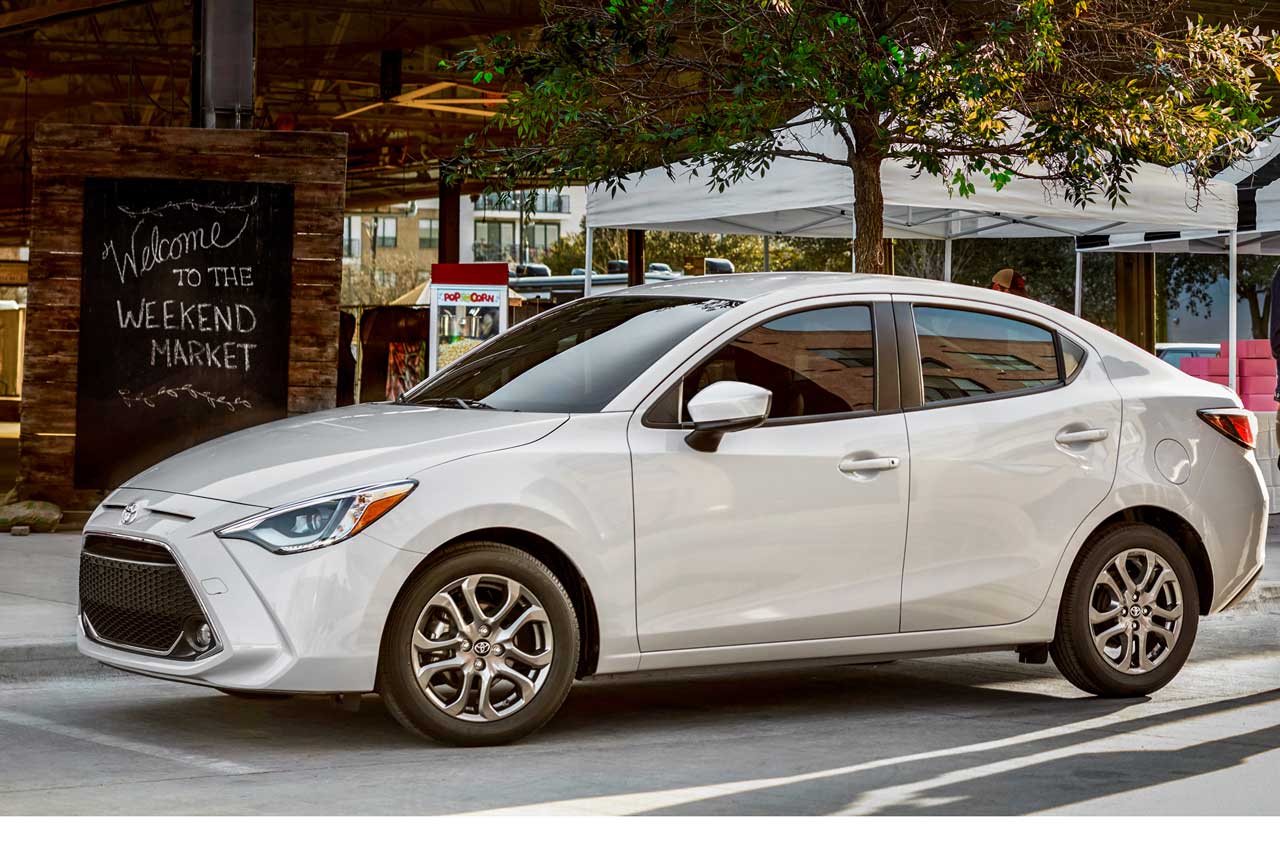
2020 Toyota Yaris
- IIHS safety rating:: None
- Trim levels: All
- Consumer Reports predicted reliability rating: 4 of 5
- MSRP: Starting at $17,705
It should be clear by now why we favor SUVs for senior drivers. But if you’re willing and able to put up with dropping your posterior down to a low-slung seat and hoisting it back out, sedans offer seniors the same advantages they offer the rest of the motoring public: somewhat better handling and gas mileage, and often substantially lower prices than their SUV counterparts. You will find the most-accessible sedans at the small-and-cheap end of the market. As designers try to fit four people into a shorter space, they often make the cars proportionally taller. This raises the seats. The Yaris, Toyota’s smallest offering, is a good example; so is the Nissan Versa. Now, the Versa was just redesigned for 2020, and it is much less of a vinyl-coated penalty box than it used to be. The Yaris is kind of dated. However, the Yaris’s rear headrests fold down, while the Versa has three visibility-robbing blobs at the top of the rear seatback. Neither car gets a top safety rating, and their headlights lag as well. You might also consider a Kia Rio or Forte.
Spending more money for something bigger and fancier won’t get you an easier entry, but it will improve safety ratings. A noteworthy model higher up the food chain is the new Hyundai Sonata, with its available (on the top-of-the-line Limited trim, $34,455) Smart Park, which lets you pull the car backward or forward out of a parking spot without you having to be in the car. You operate it with the key fob.
Profit and prosper with the best of Kiplinger's advice on investing, taxes, retirement, personal finance and much more. Delivered daily. Enter your email in the box and click Sign Me Up.

In his former role as Senior Online Editor, David edited and wrote a wide range of content for Kiplinger.com. With more than 20 years of experience with Kiplinger, David worked on numerous Kiplinger publications, including The Kiplinger Letter and Kiplinger’s Personal Finance magazine. He co-hosted Your Money's Worth, Kiplinger's podcast and helped develop the Economic Forecasts feature.
-
 Gold and Silver Shine as Stocks Chop: Stock Market Today
Gold and Silver Shine as Stocks Chop: Stock Market TodayStocks struggled in Friday's low-volume session, but the losses weren't enough to put the Santa Claus Rally at risk.
-
 Don't Wait Until January: Your Year-End Health Checklist to Kickstart 2026
Don't Wait Until January: Your Year-End Health Checklist to Kickstart 2026Skip the fleeting resolutions and start the new year with a proactive plan to optimize your longevity, cognitive health, and social vitality.
-
 Premium Rewards Cards: More Perks, Higher Fees
Premium Rewards Cards: More Perks, Higher FeesSome issuers are hiking the annual fee on their flagship luxury credit cards by hundreds of dollars. Are they still worth using?
-
 10 Things You Should Know About Buying a Car Today, Even if You've Bought Before
10 Things You Should Know About Buying a Car Today, Even if You've Bought BeforeIf buying a car is on your to-do list, and it's been a while since you went shopping for a new one, this guide will help avoid any nasty shocks in the showroom.
-
 Get the Best Car Deal in Retirement: Here's the Trick
Get the Best Car Deal in Retirement: Here's the TrickPlanning on shopping for a new car this Labor Day weekend? Here’s how to haggle for a better price, even though you're retired.
-
 What to Do With Your Tax Refund: 6 Ways to Bring Growth
What to Do With Your Tax Refund: 6 Ways to Bring GrowthUse your 2024 tax refund to boost short-term or long-term financial goals by putting it in one of these six places.
-
 What Does Medicare Not Cover? Eight Things You Should Know
What Does Medicare Not Cover? Eight Things You Should KnowMedicare Part A and Part B leave gaps in your healthcare coverage. But Medicare Advantage has problems, too.
-
 15 Reasons You'll Regret an RV in Retirement
15 Reasons You'll Regret an RV in RetirementMaking Your Money Last Here's why you might regret an RV in retirement. RV-savvy retirees talk about the downsides of spending retirement in a motorhome, travel trailer, fifth wheel, or other recreational vehicle.
-
 The Six Best Places to Retire in New England
The Six Best Places to Retire in New Englandplaces to live Thinking about a move to New England for retirement? Here are the best places to land for quality of life, affordability and other criteria.
-
 The 10 Cheapest Countries to Visit
The 10 Cheapest Countries to VisitWe find the 10 cheapest countries to visit around the world. Forget inflation and set your sights on your next vacation.
-
 15 Ways to Prepare Your Home for Winter
15 Ways to Prepare Your Home for Winterhome There are many ways to prepare your home for winter, which will help keep you safe and warm and save on housing and utility costs.
